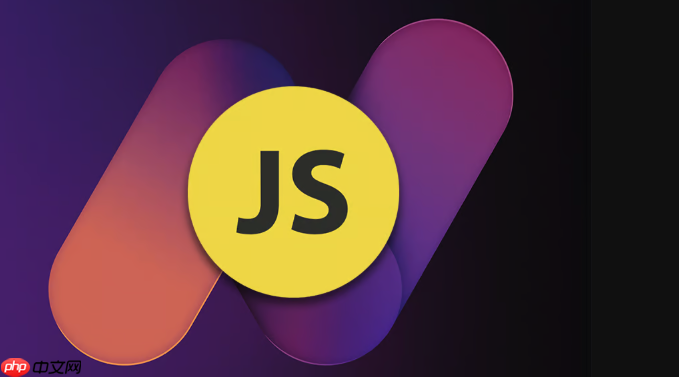箭头函数的核心差异在于this的词法绑定,它捕获定义时的上下文并始终保持不变,而传统函数的this由调用方式动态决定。1. 语法上,箭头函数更简洁,支持省略括号和return;2. this指向:箭头函数无动态this,继承外层作用域;3. 不绑定arguments,可用...args替代;4. 不能作为构造函数使用;5. 适合用作回调函数或需保持this上下文的场景;6. 避免用于对象方法、构造函数及需要this指向DOM元素的事件处理。性能方面,与传统函数无显著差异,应优先考虑可读性与语义正确性。

在我看来,JavaScript的箭头函数,是ES6给我们带来的一个非常实用的语法糖,它提供了一种更简洁的方式来定义函数,尤其在处理
this
箭头函数(Arrow Function)本质上是一种函数表达式的紧凑写法。它的基本语法是
(参数) => { 函数体 }return
但它最核心的特性,也是与传统函数表达式(
function
this
this
this
this
this
bind
call
apply
const self = this
哦对了,除了
this
arguments
...args
new
prototype
我觉得,要理解箭头函数,就得从
this
this
this
window
global
undefined
this
undefined
TypeError
// 传统函数中this的动态性
const obj = {
name: 'Alice',
greet: function() {
console.log(`Hello, my name is ${this.name}`); // this指向obj
setTimeout(function() {
console.log(`Later, my name is ${this.name}`); // this指向全局对象(window),name为undefined
}, 100);
}
};
obj.greet();
// 输出:
// Hello, my name is Alice
// Later, my name is undefined但箭头函数呢?它可就“老实”多了。它根本不关心你是怎么调用的,它在被定义的那一刻,就已经“记住”了它父级作用域的
this
this
// 箭头函数中this的词法绑定
const objArrow = {
name: 'Bob',
greet: function() {
console.log(`Hello, my name is ${this.name}`); // this指向objArrow
setTimeout(() => {
console.log(`Later, my name is ${this.name}`); // this依然指向objArrow
}, 100);
}
};
objArrow.greet();
// 输出:
// Hello, my name is Bob
// Later, my name is Bob除了
this
arguments
...args
new
prototype
选择哪种函数形式,更多的是关于你对
this

Android 基础知识入门 pdf,介绍什么是Android、Android可以完成的功能、Android架构、Android应用程序框架、Android函数库等,从开始安装Android开始,到环境配置,到一步步编写复杂的应用程序,本书将带你了解基础但有内涵的Android入门知识。
 0
0

你应该使用箭头函数的情况:
this
Array.prototype.map()
filter()
reduce()
setTimeout
Promise.then()
const numbers = [1, 2, 3]; const doubled = numbers.map(num => num * 2); // 简洁且this无副作用
this
this
你应该避免使用箭头函数的情况:
this
this
const person = {
name: 'Charlie',
sayHi: () => {
console.log(`Hi, my name is ${this.name}`); // this指向全局对象或模块的this
}
};
person.sayHi(); // 可能会输出 "Hi, my name is undefined"这里,
sayHi
this
person
this
person
class
const MyClass = () => {};
// const instance = new MyClass(); // TypeError: MyClass is not a constructorthis
button
this
this
<button id="myButton">Click Me</button>
<script>
const button = document.getElementById('myButton');
button.addEventListener('click', function() {
console.log(this.id); // 'myButton' - this指向button元素
});
button.addEventListener('click', () => {
console.log(this.id); // undefined - this指向全局对象或模块的this
});
</script>关于性能,我听到过不少人说箭头函数比传统函数快,或者反之。坦白说,在绝大多数实际应用场景中,这两者之间的性能差异几乎可以忽略不计,不值得我们去纠结。
V8引擎(Chrome和Node.js的JavaScript引擎)对两种函数类型都做了大量优化,它们在编译和执行时,效率都非常高。如果非要说有那么一丁点儿差异,那也可能是在某些极端微观基准测试下才能体现出来,而且结果往往还取决于具体的引擎版本和代码结构。比如,某些情况下,由于箭头函数没有自己的
arguments
prototype
真正影响我们代码性能的,往往是算法的复杂度、DOM操作的频率、网络请求的效率等等,而不是你用了箭头函数还是传统函数。所以,与其去考虑那点微乎其微的性能差异,不如把精力放在代码的可读性、可维护性以及
this
this
以上就是什么是JS的箭头函数?的详细内容,更多请关注php中文网其它相关文章!

每个人都需要一台速度更快、更稳定的 PC。随着时间的推移,垃圾文件、旧注册表数据和不必要的后台进程会占用资源并降低性能。幸运的是,许多工具可以让 Windows 保持平稳运行。

Copyright 2014-2025 https://www.php.cn/ All Rights Reserved | php.cn | 湘ICP备2023035733号